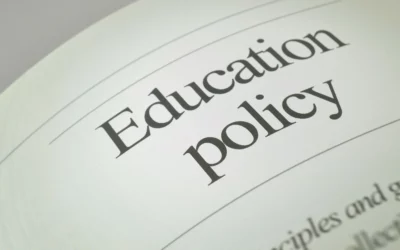
Written by William C. Duncan
March 6, 2024

The most closely watched U.S. Supreme Court decisions are typically issued near the end of the court’s term in June, but the big news came early this year. In a unanimous decision issued Monday, the court determined the state of Colorado (and other states as well) could not exclude former President Donald Trump from their election ballots.
When combined with analysis of data on the Supreme Court’s rulings in its most recently completed term, the unanimity of the Supreme Court in this case points to the conclusion that – despite activist narratives to the contrary – the court is not divided along partisan lines.
Colorado officials had determined that Trump was disqualified from running for president under section 3 of the 14th Amendment, which provides:
No person shall be a Senator or Representative in Congress, or elector of President and Vice-President, or hold any office, civil or military, under the United States, or under any State, who, having previously taken an oath, as a member of Congress, or as an officer of the United States, or as a member of any State legislature, or as an executive or judicial officer of any State, to support the Constitution of the United States, shall have engaged in insurrection or rebellion against the same, or given aid or comfort to the enemies thereof. But Congress may by a vote of two-thirds of each House, remove such disability.
Trump challenged Colorado’s decision, and the Supreme Court decided to take the case, hearing oral arguments on Feb. 8. On Monday, the court issued a brief opinion invalidating the Colorado action.
There are a couple of important notes about the decision. First, it was unanimous. Four justices (in two separate opinions) took issue with a part of the reasoning of the majority but all agreed with the result. Second, the opinion was issued per curiam, which means that it departed from the traditional practice of being attributed to a single justice with whom the others agree or disagree. Thus, it represents the consensus of all the justices joining that opinion.
Although the case potential raised numerous issues, the court’s opinion was determined by the question of state versus federal authority to determine the effect of section 3 in this case.
The court concluded the 14th Amendment “empowers Congress to prescribe how those determinations [of who is disqualified under section 3] should be made.” Specifically, the court held “that States may disqualify persons holding or attempting to hold state office. But States have no power under the Constitution to enforce Section 3 with respect to federal offices, especially the Presidency.” This is because “the text of the Fourteenth Amendment, on its face, does not affirmatively delegate such a power to the States. The terms of the Amendment speak only to enforcement by Congress, which enjoys power to enforce the Amendment through legislation pursuant to Section 5.”
Three justices, Justices Sonia Sotomayor, Elena Kagan, and Ketanji Brown Jackson, concurred. Though they agreed that Colorado could not remove Trump from the ballot, they believed that the majority of the court should not have addressed the question of Congress’ power to enforce section 3. “Allowing Colorado to do so would, we agree, create a chaotic state-by-state patchwork, at odds with our Nation’s federalism principles. That is enough to resolve this case.” At times, the three justice’s concurring opinion is strong, accusing the majority of the court of abandoning “judicial restraint.”
Justice Amy Coney Barrett also agreed with the result, although she expressed some concerns similar to those of her critical colleagues. She took issue with their approach, though:
This is not the time to amplify disagreement with stridency. The Court has settled a politically charged issue in the volatile season of a Presidential election. Particularly in this circumstance, writings on the Court should turn the national temperature down, not up. For present purposes, our differences are far less important than our unanimity: All nine Justices agree on the outcome of this case. That is the message Americans should take home.
The Supreme Court is sometimes accused of being divided on partisan lines when it comes to politically controversial issues, especially when commentators are not happy with some of the court’s decisions. As an empirical matter, recent court terms suggest this is likely an unfair accusation, and an analysis of the most recent term confirms that suggestion.
According to that analysis, 48% of the Supreme Court’s 58 rulings in the court’s last full term were unanimous decisions. While the court has six Republican-appointed justices and three Democrat-appointed justices, only 12 of their 58 rulings last term had a 6-3 split among the justices. And among those, only six had all six Republican-appointed justices and all three Democrat-appointed justices voting as blocs.
In other words, only 10% of Supreme Court rulings in the last court term followed the pattern that would be predicted by a court divided along partisan lines – a fact that points to the conclusion that the court is, in fact, not divided along partisan lines. Rather, a number of court opinions, like Monday’s, are unanimous even when they involve potentially socially contentious issues like disputes involving discrimination policies and religious freedom or the rights of religious public employees.
This week’s decision suggests that when the justices try to conscientiously apply the law, even to difficult fact situations, they can often come to broad consensus about how the law should be applied. This does not mean all the decisions will be right, but it does suggest that those using a partisan framing to attack the institutional credibility of the court are not grounded in the facts. And that is something that should influence the discussion and news reporting on the decisions of the Supreme Court.

Insights: analysis, research, and informed commentary from Sutherland experts. For elected officials and public policy professionals.

- This week, the U.S. Supreme Court reversed a Colorado Supreme Court decision removing former President Donald Trump from the ballot in that state.
- The unanimous decision – a positive outcome – was that states lack the power to block federal candidates who are allegedly disqualified for participating in insurrection under section 3 of the 14th Amendment.
- Analysis of objective data on Supreme Court decisions suggests that harsh criticisms of the court for being “partisan” are exaggerated and not grounded in the facts.
Read More
Looking at Supreme Court and religious freedom through the lens of the presidential campaign
Two constitutional issues highlight similarities and differences between the Biden and Trump administrations.
Education policy to consider during the 2024 election season
Here’s a look at what each presidential candidate is likely to focus on in education, given their track records and campaign platforms.
Ignoring the text of the Constitution is a mistake
A written Constitution is entirely superfluous if the document is simply meant to give the people what they want.


